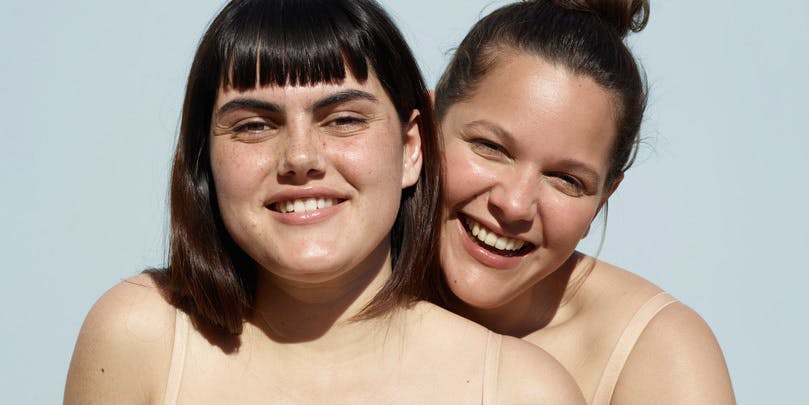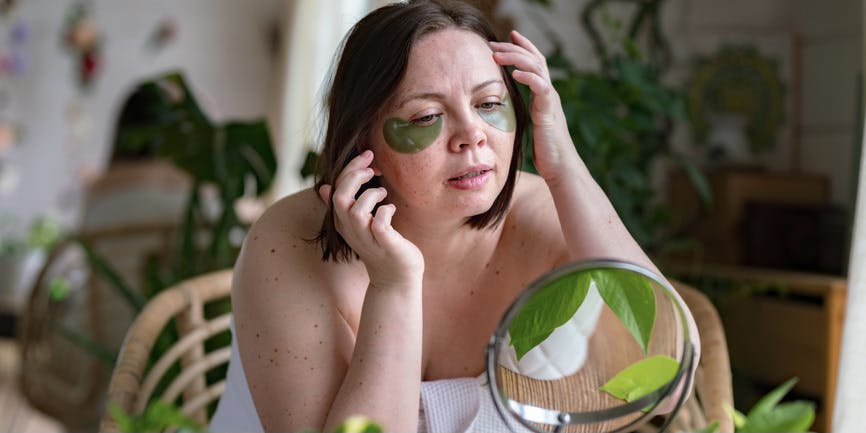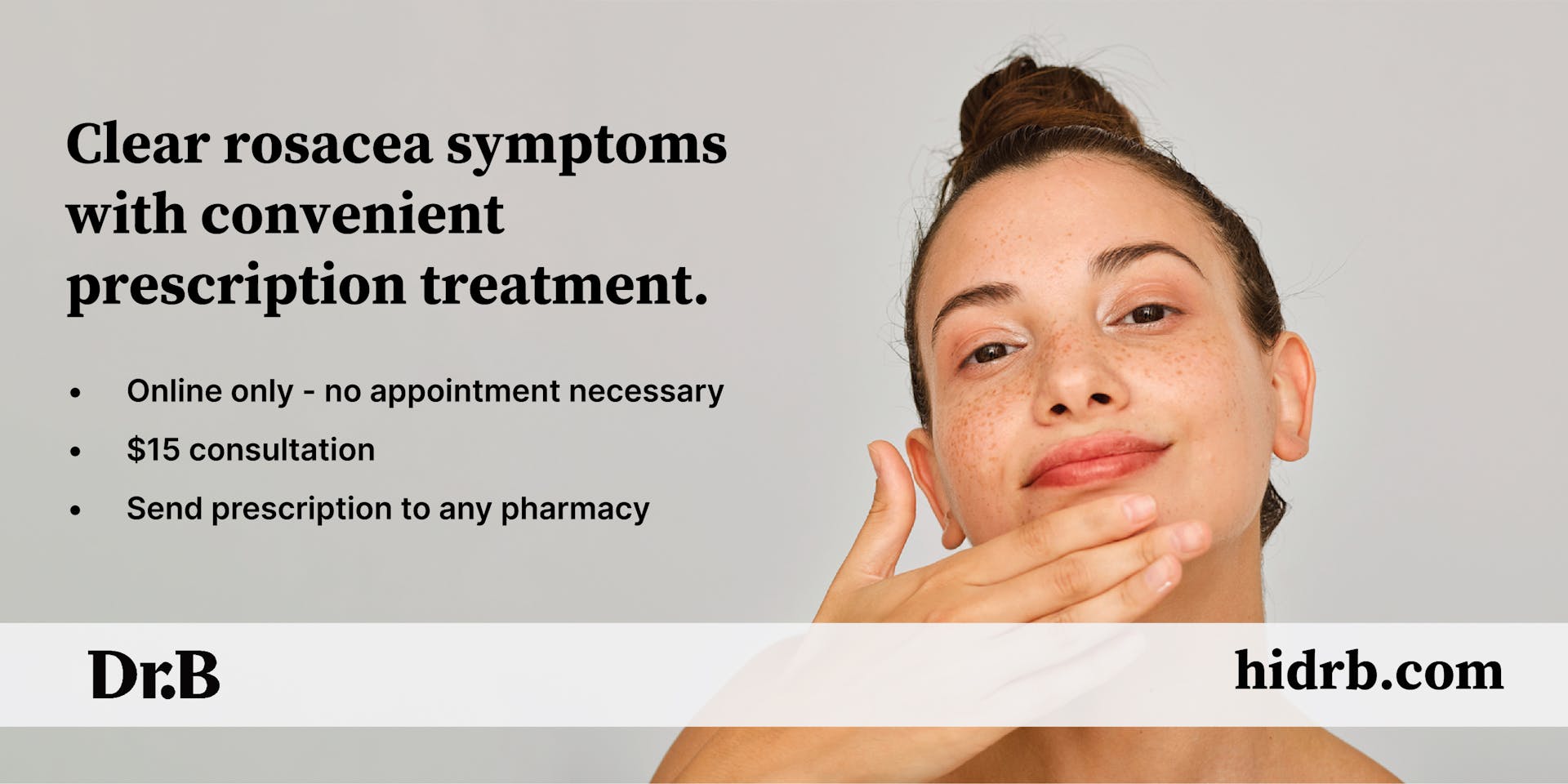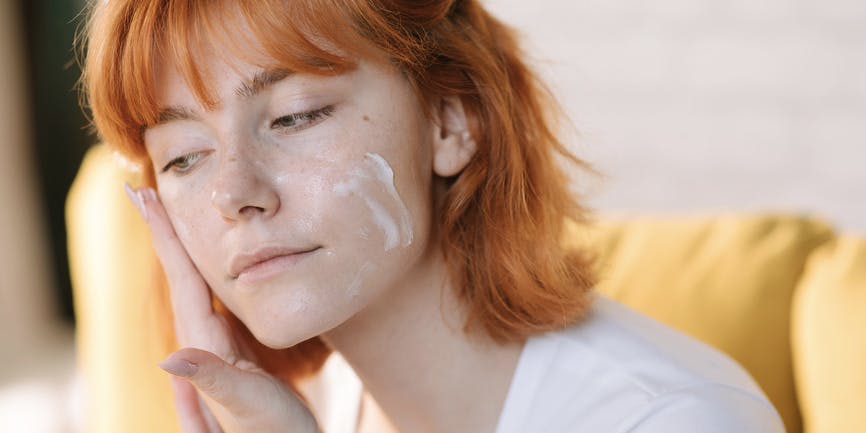
Skin care for rosacea

Topics
Key Points:
- A good skin care routine can help people with rosacea manage their skin condition, reduce irritation and prevent flares.
- It’s important to avoid common rosacea triggers. These include irritating body care ingredients, UV rays and other environmental factors.
- Over-the-counter treatments and lifestyle changes may not be enough to manage symptoms. A dermatologist can prescribe topical medications and rosacea pills that reduce related redness, flushing, bumps and breakouts.
Rosacea is an inflammatory condition that causes redness, skin darkening and flushing on the face. In later stages, it can lead to red bumps or pus-filled pimples. For some, it also causes visible blood vessels on the face. It’s more common in women and people with fair skin. But it can affect people of all skin tones. Rosacea in men is less common—but men are more likely to have a severe case.
This tricky condition can cause a lot of discomfort and pain. And many people don’t understand how their skin care routine can help—or worsen—their symptoms. If looking to soothe your skin, these tips can help you create the best skin care routine for rosacea.
Why rosacea happens
Researchers aren’t exactly sure what causes rosacea. But they’ve studied several theories.
It may relate to problems with tiny blood vessels in the face. Some researchers believe certain microorganisms found on the skin contribute. An overactive immune system may also be a factor. And there seems to be a genetic component since rosacea tends to run in families.
Environmental triggers play a big role. Identifying and avoiding individual triggers can help minimize symptoms and prevent a rosacea flare. Common triggers include:
- Spicy foods
- Hot drinks
- Extreme temperatures
- Sun or wind
- Drinking alcohol (red wine and white wine included)
- Stress
- Exercise
- Certain medications
- Some skin care products
The best skin care routine for rosacea
A good skin care routine can reduce flare-ups, improve the appearance of your skin and help your skin feel more comfortable.
Here are a few best practice tips:
Step 1: Wash your face twice daily with a gentle, non-soap cleanser.
If you have sensitive skin that’s irritated or uncomfortable, you may avoid washing your face. But washing twice a day with a gentle cleanser removes bacteria, dirt and oil that otherwise worsen symptoms long term.
Using your fingertips, apply the cleanser in a circular motion. (Avoid scrubbing or abrasive cleansers.) Rinse completely with lukewarm water. Then pat dry with a clean towel.
Step 2: Moisturize after cleansing.
Use a gentle moisturizer after cleansing to help trap water in the skin. This can help skin feel more comfortable and reduce signs of irritation like dryness, roughness or peeling. It can also help to choose creams rather than lotions or gels.
Step 3: Use sunscreen every day
Sun exposure is one of the most common rosacea triggers. It’s important for everyone— regardless of skin tone—to use a broad-spectrum sunscreen (SPF 30+) every day. Do this even when it’s cloudy!
Choosing a sunscreen that won’t irritate your skin can be tricky. Look for sunscreens with:
- Zinc oxide, titanium dioxide or both
- Silicone (look for orcyclomethicone, dimethicone, or cyclomethicone)
- No fragrance or fragrance-free
- Broad-spectrum protection
- SPF 30 or higher
Step 4: Choose soothing skin care products
Look for gentle products that won’t irritate your skin. Avoid astringent toners or exfoliators. Skip any products with added fragrance—even if it says unscented. Look for fragrance-free instead!
The best makeup for rosacea-prone skin
If you like to wear makeup, try to limit the number of products you use. Every additional product may introduce new irritants. Here are some other things to keep in mind when you apply makeup:
- Always test a new product on your arm or neck to make sure it doesn’t cause redness, burning or stinging.
- Apply products with an antibacterial brush instead of a sponge or your fingertips. Clean makeup brushes between uses.
- A sheer, green-tinted primer can help color correct, even out or cover redness. It can also help makeup last longer.
- Choose oil-free products.
- Use concealer under the eyes or over visible or broken blood vessels or veins on your face. Look for a concealer color one shade lighter than your normal skin tone. When it comes to foundation, the color should match your normal skin tone as closely as possible.
- Consider mineral makeup, which is often free from common skin irritants. Mineral powder may be especially light and gentle.
- Go light on the blush—rosacea-prone skin usually has plenty of color. Similarly, try neutral lip shades—red tints can bring out the redness in your face.
What not to use when you have rosacea
Reading the ingredient label before using any products on your skin is essential. When in doubt, choose gentle, soap-free and fragrance-free products. But also look out for these ingredients that can make rosacea worse:
- Camphor
- Menthol
- Alcohol
- Urea
- Astringent toners
- Lactic acid
- Sodium laurel sulfate
- Fragrances
- Glycolic acid
Dermatologist-approved treatments for rosacea
If over-the-counter treatments aren’t enough to manage your rosacea symptoms, it’s time to talk to a dermatologist.
There are several rosacea medication options available—depending on what type you have and how severe your symptoms are. The first step is usually topical creams or gels to help manage redness, bumps and pimples. Oral rosacea medicines can then help treat severe cases of related acne.
Advanced treatments can address visible blood vessels, redness, extra skin or other deformities. This might include laser therapy or surgical removal of extra skin.
Convenient prescription treatments for rosacea
Have a question about a rosacea prescription? We can help clear things up for you.
If you’re ready to explore prescription rosacea treatments, Dr. B can help with that, too! Just fill out a short health questionnaire. A board-certified medical provider will review your assessment and help you understand your treatment options.
Sources:
American Academy of Dermatology Association. 6 rosacea skin care tips dermatologists give their patients.
Farshchian, M., et al. (2022). Rosacea. StatPearls.
Kang, C. N., et al. (2021). Rosacea: An update in diagnosis, classification and management. Skin Therapy Letter.
National Rosacea Society. Makeup for rosacea.
Rivero, A. L., et al. (2018). An update on the treatment of rosacea. Australian Prescriber.
Zip C. (2017). The role of skin care in optimizing treatment of acne and rosacea. Skin Therapy Letter.
Topics
Sign up for the free Dr. B newsletter for a weekly report on the latest in healthcare + research-based advice for staying healthy and mentally well.


